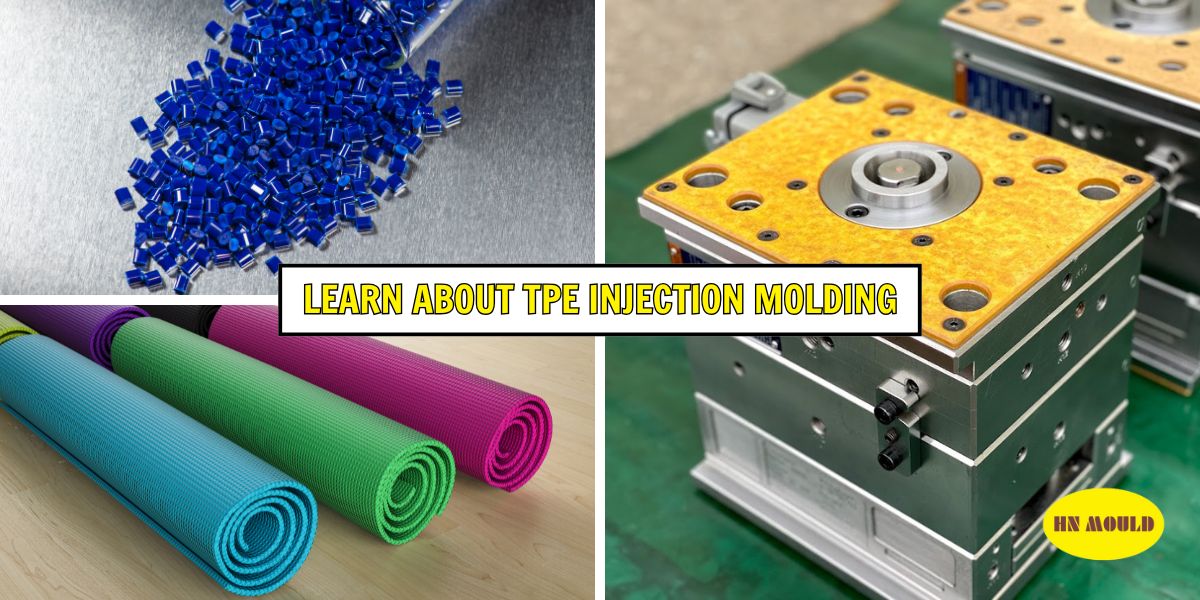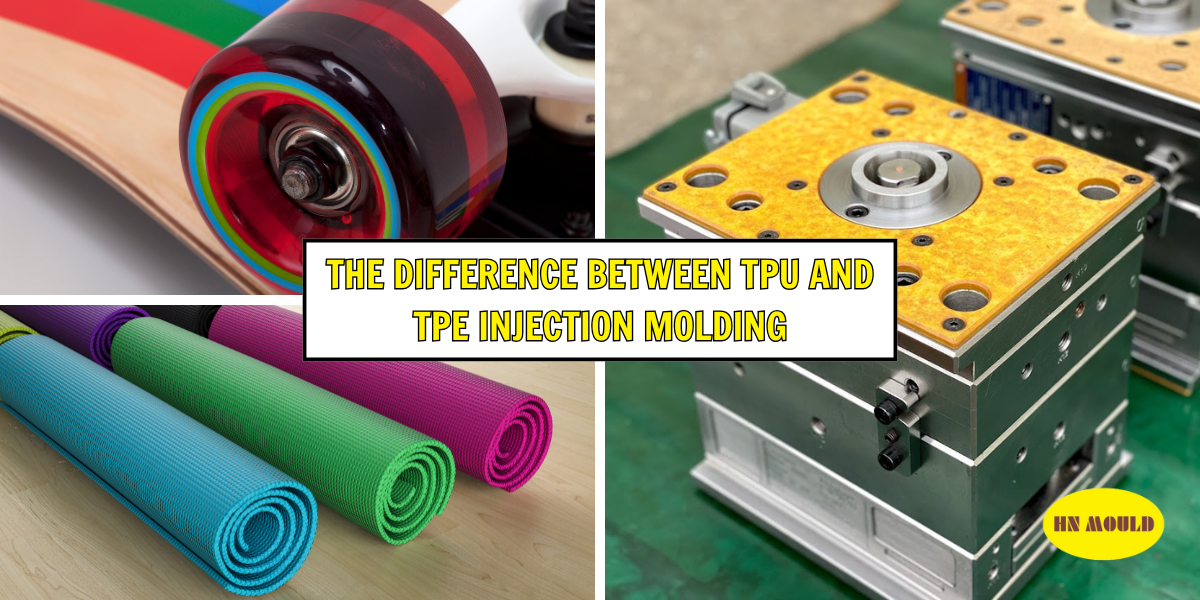Contents
In the plastic industry, choosing the right material is crucial to ensure that the final product meets quality requirements and optimizes production costs. Two commonly used plastics in the injection molding process are TPU (Thermoplastic Polyurethane) and TPE (Thermoplastic Elastomer). This article will delve into the differences between these two types of plastics, covering material properties, manufacturing processes, applications, and their advantages and disadvantages, providing you with a comprehensive overview to help you make informed decisions for your project.
If you are interested in injection molds and need to produce plastic products in bulk, don’t hesitate to get in touch with Hanoi Mould or call our hotline at 0912 308 979 for consultation!
1. Material properties
1.1 TPU plastic
- Characteristics: TPU is a thermoplastic elastomer known for its high elasticity. It stands out for its excellent abrasion resistance, heat resistance, and chemical resistance. TPU can maintain its shape and rigidity well, making it an ideal choice for products that require high durability.
- Chemical structure: TPU is formed from urethane linkages, which give it elastic properties and good load-bearing capacity. This structure also makes TPU resistant to aging and UV radiation.
- Features: TPU can be produced in a range of hardness levels, from soft to rigid, allowing for flexibility in product design.

1.2 TPE plastic
- Characteristics: TPE is a thermoplastic elastomer that has rubber-like elasticity but is easy to process like plastic. TPE is generally lighter and has good recyclability, making it a popular choice in many consumer applications.
- Chemical structure: TPE is created from a combination of plastic and rubber, with a structure that allows for flexibility and ease of manufacturing.
- Features: TPE can also be produced in various hardness levels, but it does not achieve the same durability and abrasion resistance as TPU.
2. Injection molding process
2.1 TPU injection molding
- Process: TPU injection molding requires higher temperatures than TPE, typically ranging from 180°C to 220°C. This process involves heating the TPU to a liquid state and then injecting it into a mold under high pressure.
- Cooling time: TPU has a fast cooling time, which helps reduce production time and increase efficiency. The typical cooling time ranges from 10 to 30 seconds, depending on the size and thickness of the product.
- Equipment requirements: Use injection molding machines capable of precise temperature control and high pressure to ensure product quality.
2.2 TPE injection molding
- Process: TPE injection molding tends to be more flexible and can be performed at lower temperatures, usually between 160°C to 200°C. TPE can be molded using various techniques, including traditional injection molding and multi-layer injection molding.
- Cooling time: TPE also has a quick cooling time, typically ranging from 5 to 15 seconds, which helps save production time.
- Equipment requirements: Injection molding machines with adjustable temperature and injection speed settings are needed to accommodate the characteristics of TPE.

3. Applications
3.1 TPU applications
- Applications: TPU is commonly used in high-durability products such as:
- Footwear: TPU material helps shoes maintain elasticity and durability.
- Sports equipment: Used in products like sports balls, tennis rackets, and other sporting goods.
- Automotive parts: TPU is used for components that require strength and durability.
- Pharmaceutical industry: Due to its safety and antibacterial properties, TPU is used in medical devices like syringes.
3.2 TPE applications
- Applications: TPE is widely used in consumer products such as:
- Toys: Safe toys for children often use TPE.
- Phone accessories: TPE is used for phone cases and other accessories.
- Household products: Includes items like handles, bottle caps, and other products.
- Healthcare industry: TPE is favored for products like syringes, bandages, and other medical devices.
Learn about TPE injection molding: https://hanoimould.com/learn-about-tpe-injection-molding/
Learn about Thermoplastic Polyurethane (TPU) injection molding: https://hanoimould.com/learn-about-thermoplastic-polyurethane-tpu-injection-molding/
4. Advantages and disadvantages
4.1 TPU plastic
- Advantages:
- High durability: Excellent abrasion resistance and heat resistance contribute to longer-lasting products.
- Chemical resistance: TPU can withstand various chemicals, oils, and solvents.
- Flexibility: Can be produced in different hardness levels, suitable for various applications.
- Disadvantages:
- Higher cost: TPU production costs are generally higher than those of TPE.
- Difficult to process: Requires higher processing temperatures, which may necessitate specialized equipment.
4.2 TPE plastic
- Advantages:
- Easy to process: TPE is easy to mold and shape.
- Lower cost: Production costs are lower, making it suitable for consumer products.
- Good recyclability: TPE can be recycled and reused.
- Disadvantages:
- Lower durability: Does not possess the same durability and abrasion resistance as TPU.
- Poor heat resistance: Not capable of withstanding high temperatures like TPU.
If you are interested in injection molds and need to produce plastic products in bulk, please get in touch with Hanoi Mould or call our hotline at 0912 308 979 for consultation!

Conclusion
Choosing between TPU and TPE depends on the specific requirements of the product and application. TPU is the ideal choice for products that require high durability and chemical resistance, while TPE is more suitable for applications that demand flexibility and lower costs. Understanding these differences will help you make informed decisions in the design and production processes of your products. Carefully consider the factors above to optimize your production process and ensure the quality of the final product.
 Tiếng Việt
Tiếng Việt English
English 日本語
日本語
